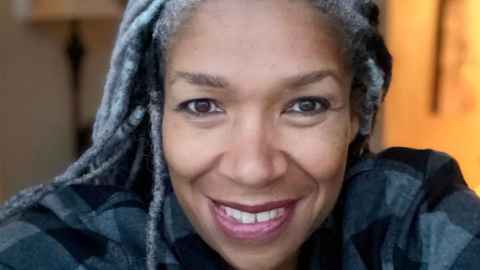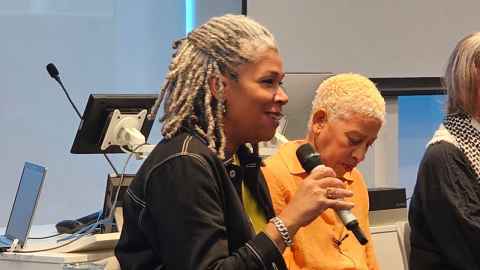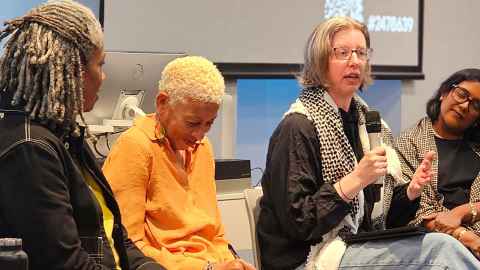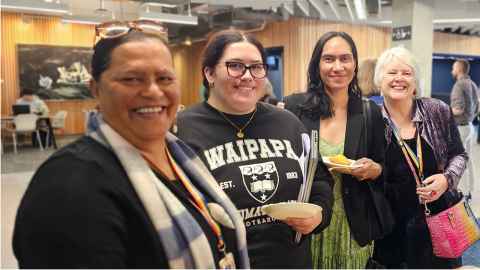Addressing racism and the gender pay gap
26 May 2025
Women of Colour staff network hosted panel on 21 May.

The Women of Colour staff network, in partnership with Te Tumu Herenga at Waipapa Taumata Rau, University of Auckland, hosted a panel on ‘Racism and the Gender Pay Gap’ on 21 May.
Founder of the network, academic engagement adviser Suzanne Acharya (Canadian-Caribbean descent, Nigerian, Scottish, Chinese) says the panel created much needed dialogue to help address the existing gender pay gap.
“It was an amazing event and we were fortunate to have a panel of formidable Women of Colour who continue to advocate and address the current inequities.”
In 2024, the University began collecting ethnic data for its second Gender Pay Gap report, which provided evidence that Women of Colour (both academic and professional staff) were subject to gender pay discrepancies ranging from 16.1 percent to 24.8 percent.
Mia-Mae Taitimu-Stevens, Māori and Pacific academic engagement adviser at Te Tumu Herenga facilitated the panel that included speakers Acharya, Professor Camille Nakhid from AUT, Associate Professor Donna Cormack and Audrea Warner from the University of Auckland.
Taitimu-Stevens (Pawarenga, Te Rarawa, Togafuafua, Tokelau) says making changes to the status quo requires a long-term approach.
“It requires small meaningful steps – steps that acknowledge the different starting points of individuals, in understanding the impact of racism, and how that bias manifests negatively in the lived-experiences of Women of Colour here at Waipapa Taumata Rau,” she says.
This is a unique opportunity for leadership to demonstrate the value and worth of Women of Colour at Waipapa Taumata Rau by addressing the gaps that exist.
The panel shared personal experiences of feeling stymied by a system they see as fraught with bias, unwittingly throwing up barriers to leadership promotion, feeling overly scrutinised in comparison to colleagues, and being subjected to frequent acts of micro aggressions.
The discussion turned to allyship – the simple act of leaders to support, amplify and advocate for those often marginalised.
“I had a manager in a previous role that didn’t get it, but knew I needed support,” says Acharya. “We put this practice into place. Whenever we had clients who were inappropriate in their language, a colleague would come up, tap me on the shoulder and say ‘Suzanne, it’s time for your break’ and as I left, I’d overhear them saying ‘that’s not OK, you can’t talk like that’.”
Acharya says putting this practice into place also helps the workplace to address other issues such as misogyny.
“In coming forward to support me, people had permission to use their voice to address other behaviours that were outrightly inappropriate and impacting them.”
Acharya was hopeful the panel would enable those in the audience to feel empowered and energised, and she says this was clearly evident with the positive responses to the discussions held.
A professor of social science and public policy at Auckland University of Technology, Camille Nakhid, told the audience that in coming together as an organisation, small changes would occur. She reminded them to apply for leadership roles, to work toward management positions.
“I read somewhere that we should have the confidence of a mediocre white man.”
Taitimu-Stevens echoed her words, commenting that uniting as an organisation would help to address the current inequities that exist.
“We can be transformative as a community and enact meaningful change,” she says.
Acharya says tackling the inequities that exist and the gender pay gaps presented the University of Auckland with an opportunity, to be a bold leader and set an example on ways to improve workplace culture and enhance the well-being of staff.
“This is a unique opportunity for leadership to demonstrate the value and worth of Women of Colour at Waipapa Taumata Rau by addressing the gaps that exist.”
The panel discussion was attended by around 70 people, including Professor Cathy Stinear, Pro Vice-Chancellor Equity, Waipapa Taumata Rau.
“It was an important and energising discussion, full of insights that will inform our ongoing efforts to address the drivers of our gender pay gaps. I look forward to continuing our collaboration with the Women of Colour staff network.”






